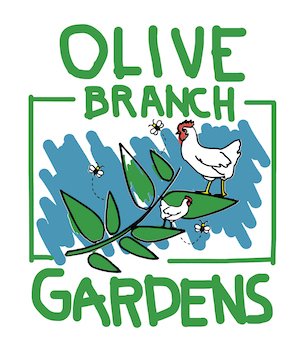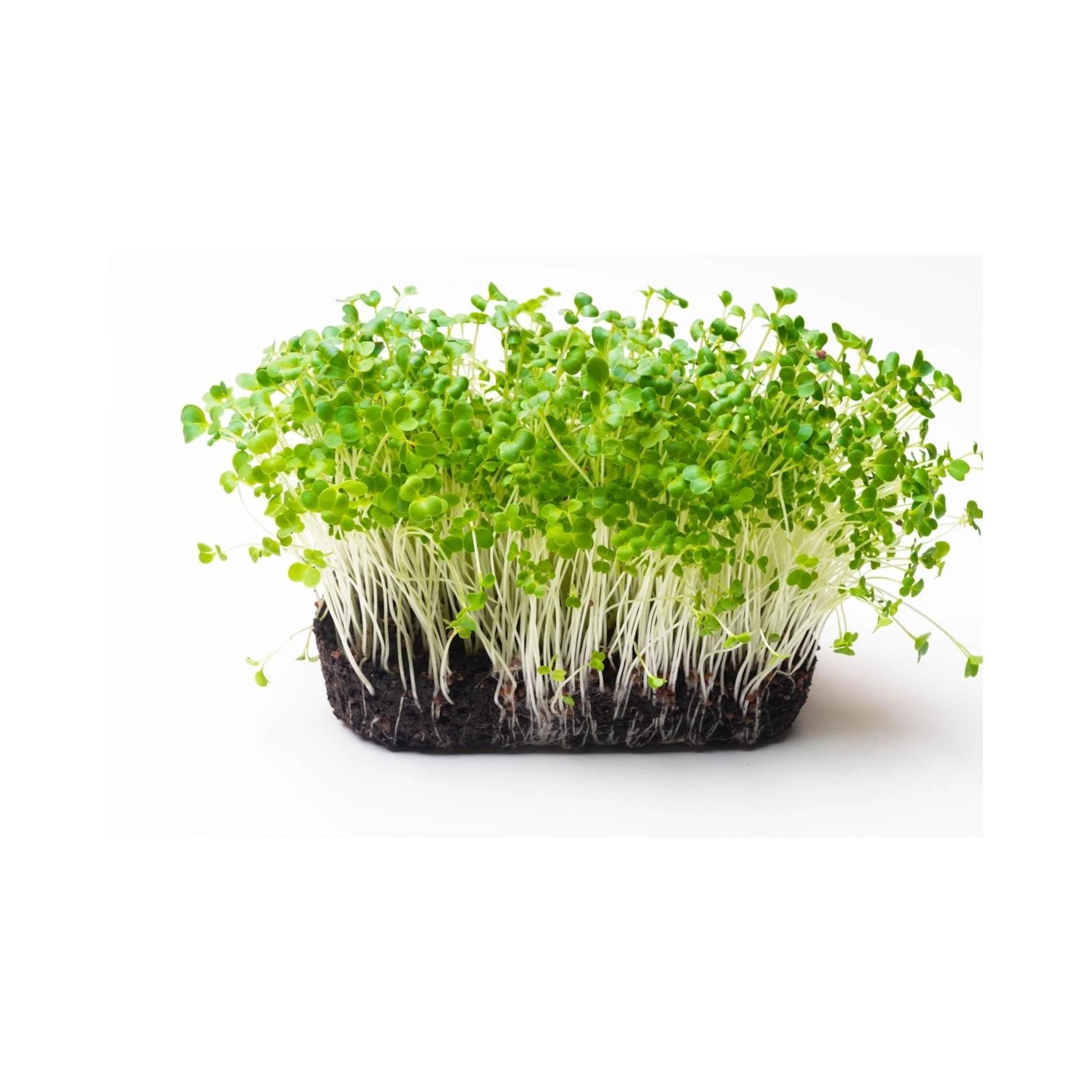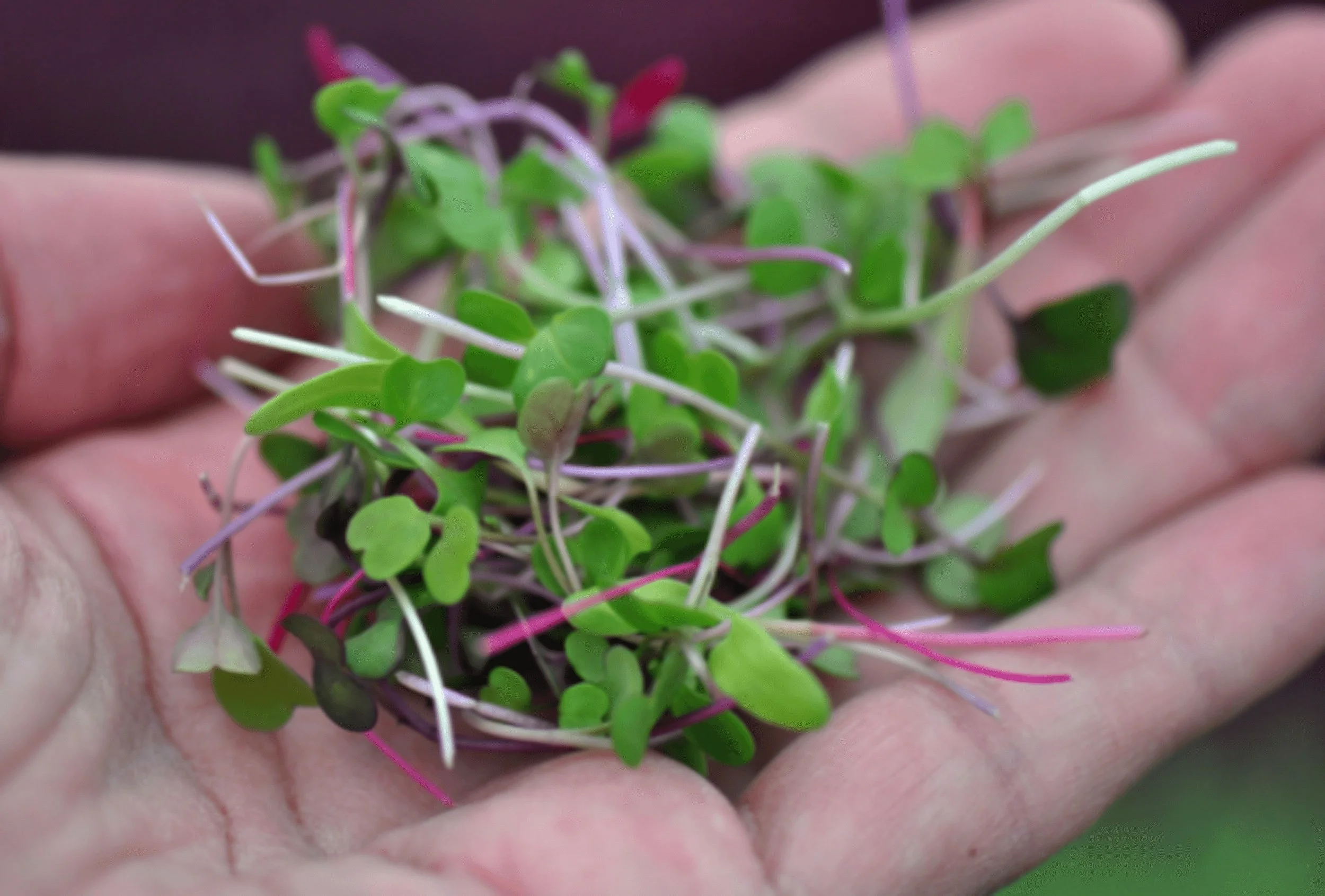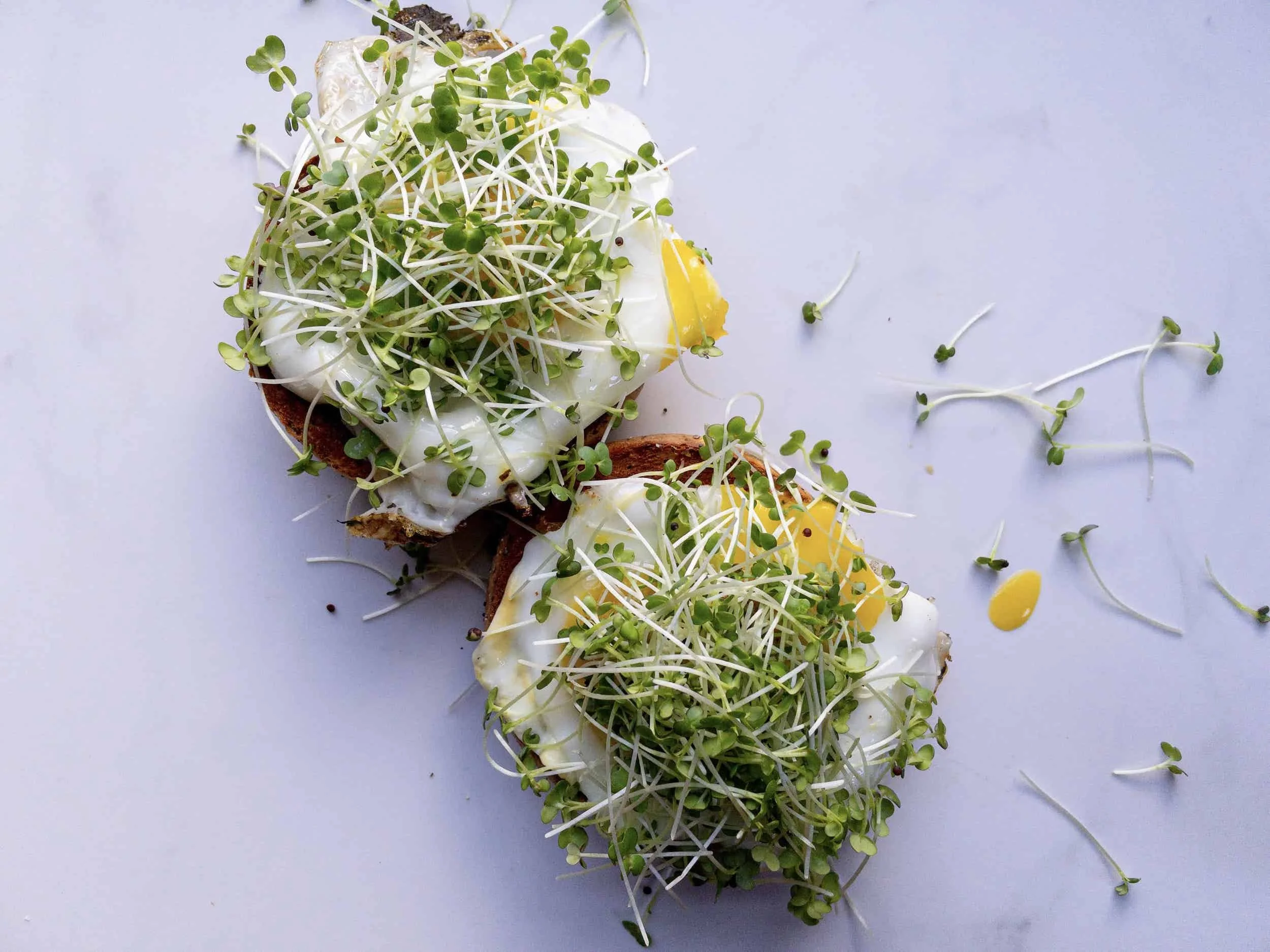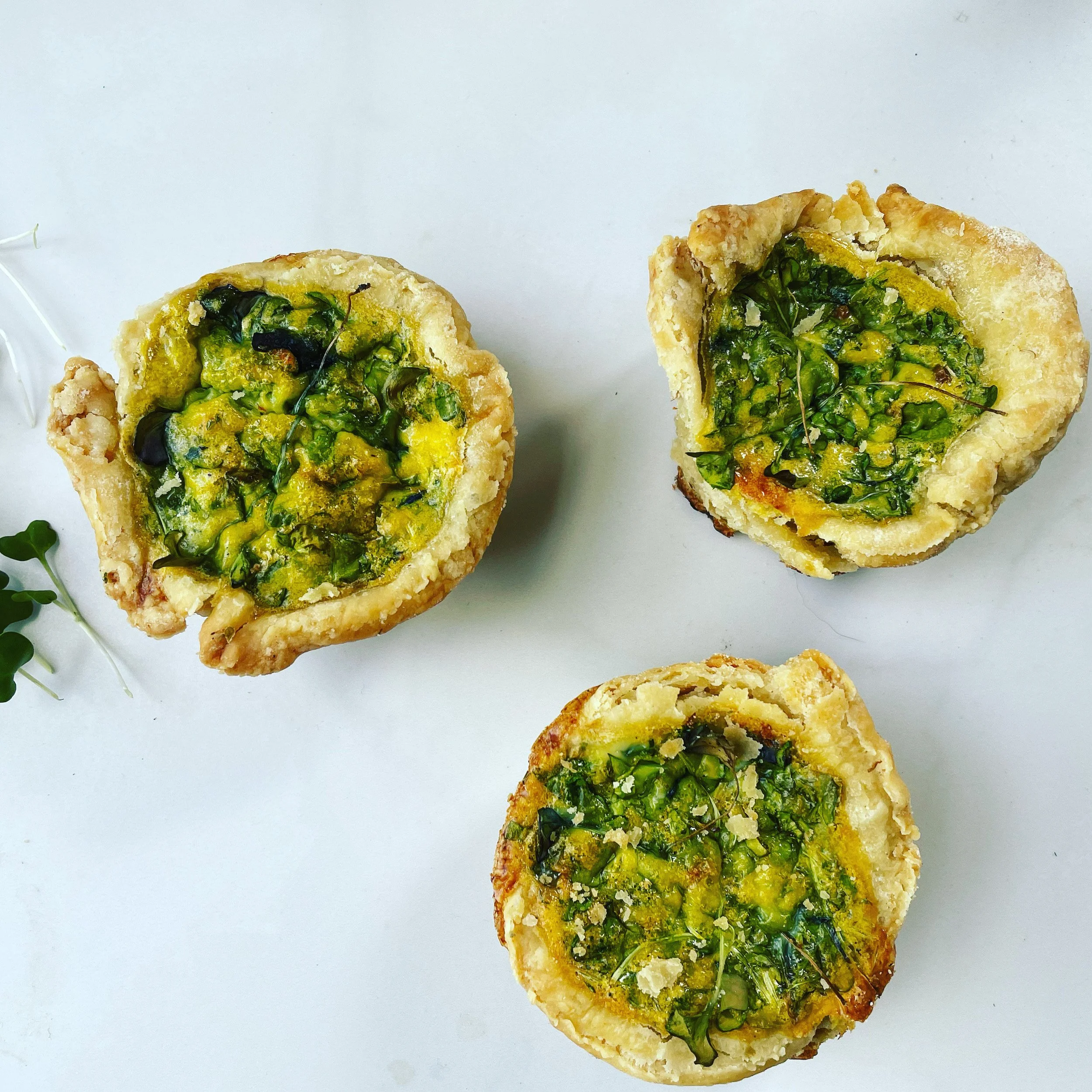How to use Microgreens
Have you purchased microgreens but are unsure of what to do with them? Or have heard of microgreens and how amazing they are, but haven’t taken the step to try them? As a microgreen grower, seller and eater I explain all that you need to know and after reading you will feel like a microgreen eating expert!
What are microgreens?
Microgreens are green vegetables harvested right after they develop cotyledons (first leaves that form when the seeds start to sprout), but before they develop true leaves. Like the name suggests they are tiny (micro-size) vegetables and are grown and harvested within 10 - 3 weeks depending on the variety. Where sprouts have some risks associated with them due to their humid growing environment, microgreens are completely safe to eat.
What do they taste like?
Microgreens taste similar to their full grown plant! For example, broccoli microgreens have a mild broccoli taste while radish microgreens have a nice spice/bite to them. They are easy to chew and digest easily, so don’t worry about eating a broccoli microgreen if you have trouble digesting large pieces of broccoli or other cruciferous vegetables.
What part of the microgreen do you eat?
The entire thing! Stem and all. There is also no need to wash microgreens ahead of time since most often they are watered through their roots and the part you are eating does not come in contact with the soil or get dirty.
Types of microgreens and how to choose.
There are MANY types of microgreens, and every time I look at the microgreen seed cataloug it seems there are new ones! Below I listed some of the more popular varieties that you will most likely find. When deciding which to purchase, think about what vegetables you generally enjoy.
As mentioned above, a lot of the microgreens taste like their full grown plant, so if you like spicy arugula - you will most likely enjoy the microgreen version! At our farm, we also create mixes so that is always a good starting point when deciding.
Broccoli, kale, cabbage - mild flavor
Radish - spicy flavor and often can be found in pretty colors
Arugula - spicy
Mustard - spicy
Sunflowers - nutty!
Pea shoots - sweet
Cilantro - taste, and smell just like cilantro!
Basil - is a bit sweeter than full grown basil
Parsley - earthy and taste just like parsley
How to use Microgreens
I always tell customers that microgreens are the easiest way to get nutrition. They are SO versatile and go with most dishes/foods. You literally grab them from the container (or live harvest them if you are growing them) and add them to a dish, with no preparation is needed.
Most often there is no need to cut them since they are already bite sized and there is no need to wash them! Can’t be any easier than that! Below are some of my favorite ways I like to use microgreens that are simple and tasty!
Salads - since they are delicious raw they make great addition to salads. Whether you have one variety or a mix of different kinds they all will taste good combined with other salad ingredients. Since microgreens have such a lovely flavor and texture, you can easily go heavy on the amount that you use.
2. Sandwiches - instead of a boring piece of lettuce, add a handful of microgreens. They add such a great texture to a sandwich and since microgreens are small, they stay on the bread and will taste microgreens with each bite.
3. Eggs/quiches/omelets - When using microgreens for these dishes, I recommend cutting them. They tend to become stringy after cooking, so giving them a quick chop will solve that. Add the microgreens on top of the finished omelet, or incorporate it into the egg mixture. Interested in a microgreen quiche recipe? Try our mini sourdough microgreen quiche recipe
4. Pasta dishes - adding microgreens will definitely help to improve the dish from the taste to the appearance. Forget just adding microgreens as a garnish, they can be one of the main ingredients! If it is a hot pasta dish, take it off the heat and then stir in a handful of microgreens. If it is a cold pasta dish, add the microgreens in the beginning so they absorb all the flavors.
5. Tacos - just like you would add shredded cabbage or lettuce on top try using microgreens instead of in addition! While using cilantro and cabbage microgreens would be the most “fitting” any variety would add great flavor.
6. Pizza - I would recommend using arugula microgreens on top of pizza, just like you would use full-leaf arugula. Add the microgreens after you take the pizza out of the oven, season with dried oregano, basil, and parmesan cheese, and cut.
7. Pesto - microgreens make a great pesto! While you can use just basil microgreens for a traditional pesto, you can use any other variety too. Check out our xxx
8. Smoothies - most varieties except for radish, arugula, and anything spicy can be a great addition to a smoothie. You won’t really taste the microgreens if you add a small amount. I would recommend using no more than ½ cup in the beginning, and be sure to add fruit to give it some sweetness!
Cooking microgreens
Microgreens should not be cooked like you would the full grown plant like kale or spinach. They are very delicate and will become mush quickly. I have only had success baking them in dishes such as quiches and omelets. Leaving them raw is always the safest bet to keeping them edible.
What are the Nutritional Benefits
Studies show that microgreens have a lot of nutritional value. They are rich in vitamins, minerals, and phytochemicals. In addition, microgreens have anti-inflammatory, anti-cancer, and anti-bacterial and helps to lower blood sugar levels.
How long do they last & how to store?
When harvested and stored properly microgreens can last up to two weeks in the refrigerator. If the microgreens are dry when they are packaged, then they can easily last 1 week maybe two! You can prolong their shelf life by transferring them into a bigger airtight container with a paper towel on the bottom to keep the moisture out.
Where to buy microgreens
Microgreens can be found at farmers’ markets and some health food stores. I have seen some varieties at our local Trader Joe’s and Whole Foods. And of course, if you visit the farmers market at IX park in Charlottesville, come say hello!
Microgreens have become popular in the last several years and for a good reason! They are very versatile and easy to use. There are many dishes that microgreens can easily be added to for extra flavor. Studies have shown multiple health benefits from consuming them.
